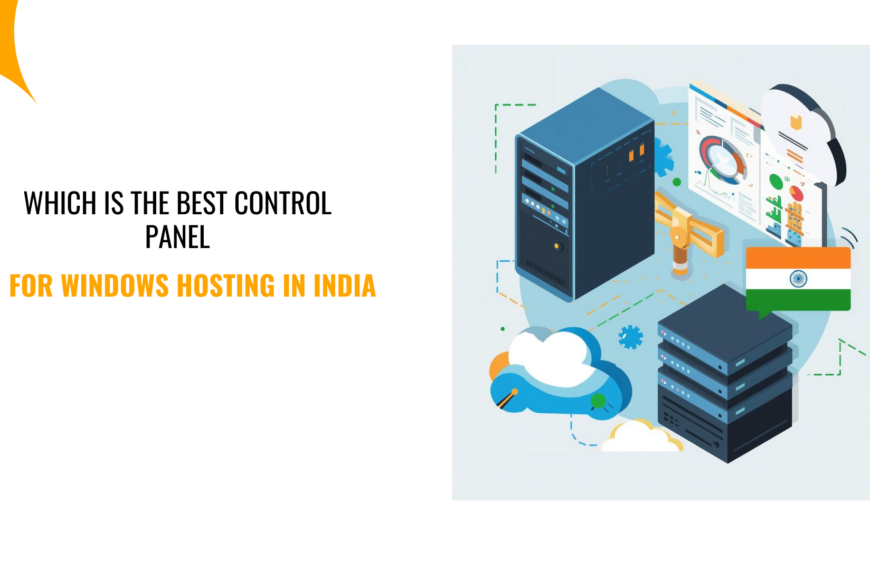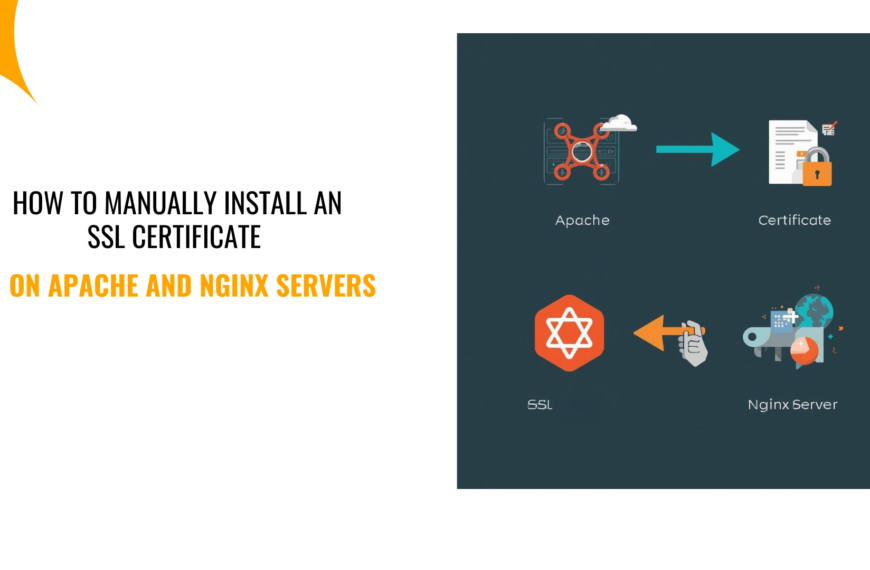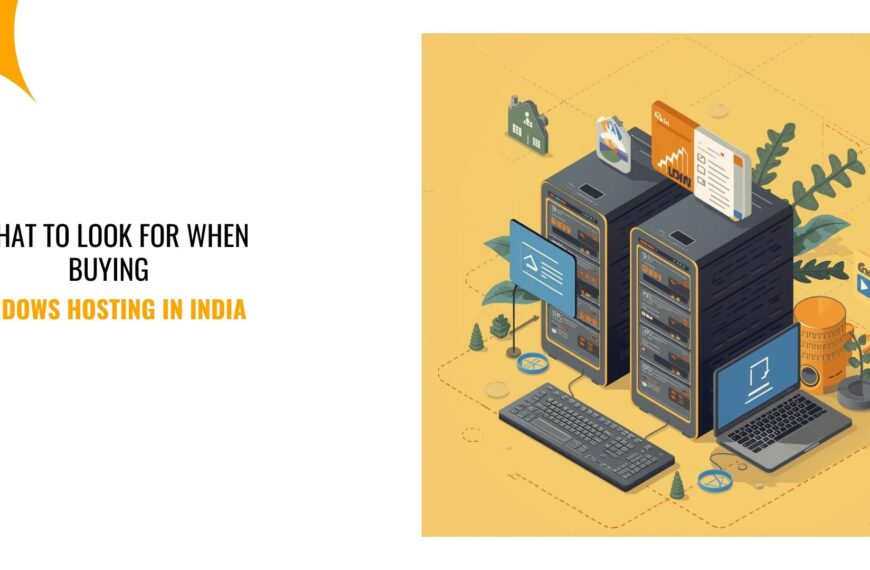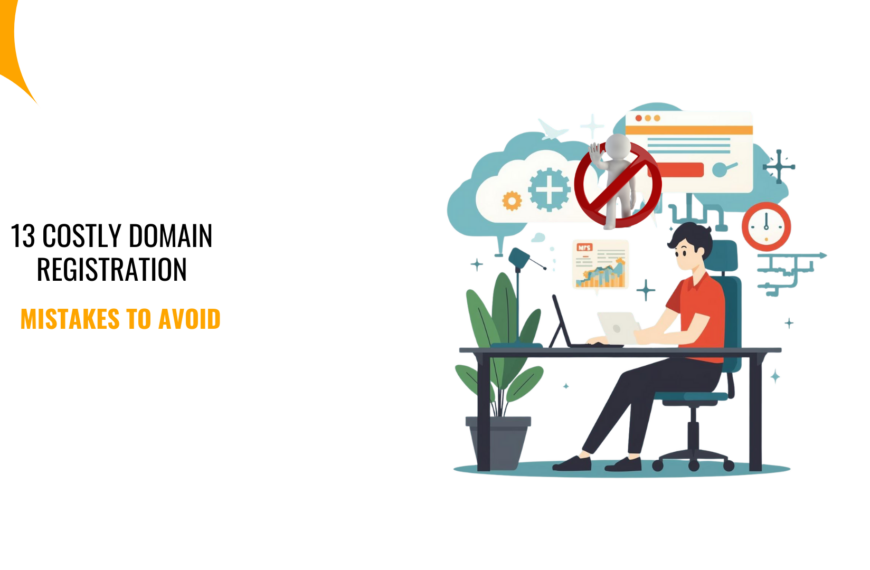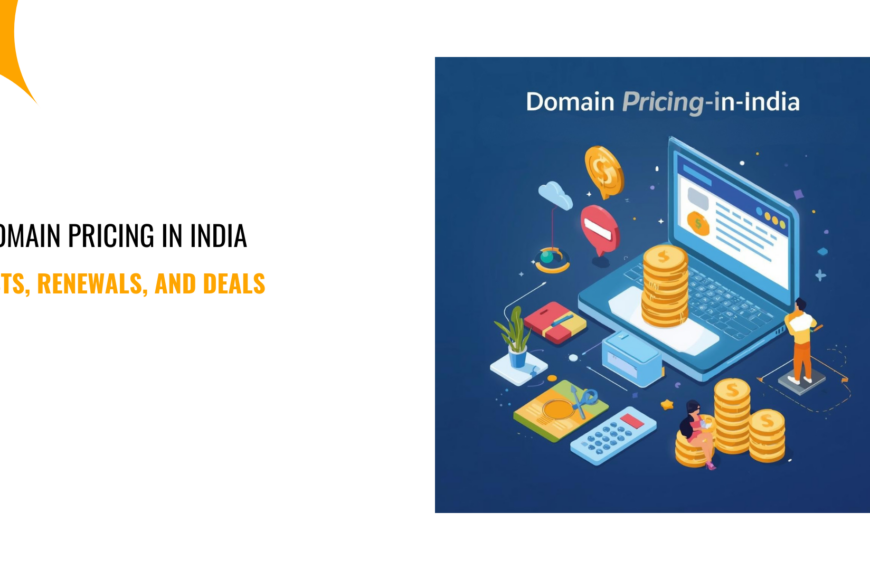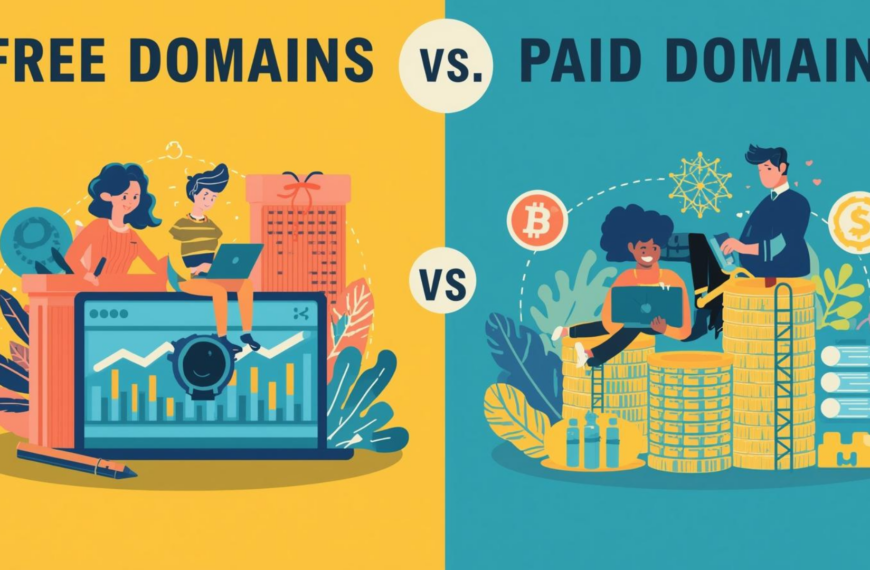Local SEO in India can be extremely beneficial in a country with a market as busy as ours, with millions of searches happening every single day.
Let’s suppose you own a cozy café in Mumbai, but when someone Googles “best café near me,” your shop doesn’t show up.
While it may be a hard pill to swallow, this is a reality a lot of small Indian businesses have to face in this tough competition.
The good news is that you can crack the code to these local search successes without a big budget or fancy agency.

We have prepared this comprehensive read to enable you to easily master local SEO in India to attract nearby customers, boost your sales, and strategically position yourself to take advantage of the local market.
We will show you how to take advantage of Google’s ranking, how to use Truehost’s .in domains, and most importantly, the pandora’s box to avoid.
Here’s what you’ll learn:
- The importance of local SEO in India for small businesses and startups.
- An integrated and concise approach to boost your online presence.
- Additional Advanced Strategies for 2025 and beyond to keep you ahead.
- How Truehost’s affordable .in domains can supercharge your local rankings.
So let’s enable your business to be easily found!
Understanding Local SEO
Local SEO is all about making your business visible to people searching for services in your area—think “dentist in Bangalore” or “boutique in Kolkata.”
Unlike traditional SEO, which casts a wide net, local SEO in India zooms in on proximity, relevance, and trust to connect you with nearby customers.
But let’s break it down further.
Local SEO involves optimizing your online presence so that search engines like Google prioritize your business in local results.
This includes the Google Map Pack (those top three listings with maps), organic results below it, and even voice search responses on devices like Google Assistant.
In India, where over 700 million people are online as of 2025, this is crucial because local searches drive real-world actions.
For instance, if you’re a plumber in Pune, showing up for “emergency plumber near me” could mean the difference between a busy day and crickets.
Why Local SEO Is a Big Deal in India
More people in India are going digital, and local SEO in India is at the heart of that.
Nearly 50% of Google searches are local, and in India, this number is even higher thanks to mobile users in cities like Pune and rural areas alike.

A 2024 study by Statista noted a 200% surge in local searches year-over-year, driven by “near me” queries.
In fact, 76% of consumers who perform a local search on their smartphone visit a business within a day, and 28% of those searches result in a purchase.
Mobile searches for “near me” have grown over 150% in the past two years in India, fueled by voice assistants in languages like Hindi and Tamil.
In short, local SEO in India helps you compete.
Platforms like Justdial and Sulekha amplify this, but Google dominates with 92% market share in India.
Ignoring local SEO means missing out on billions in potential revenue—the SEO market in India alone is projected to hit $1.5 billion by 2030.
Key Components of Local SEO
At its core, local SEO in India revolves around three pillars:
- Proximity: How close you are to the searcher.
- Relevance: Does your business match the query?
- Prominence: How well-known are you online (reviews, links, etc.)?
Common Myths About Local SEO in India
“I need a big budget for local SEO.” Nope! You can do it yourself with free tools and affordable solutions like Truehost’s .in domains. Many small businesses start with just a Google Business Profile and see results.
“It’s only for physical stores.” Wrong—e-commerce sites like Myntra use local SEO to target city-specific shoppers, offering localized deals.
“Local SEO is the same everywhere.” Not in India! Multilingual content (Hindi, Tamil, etc.) and regional directories make it unique.
The Role of a .in Domain in Local SEO
A .in domain is like a digital “Made in India” badge.
It tells Google your business is relevant to Indian searchers, boosting local SEO in India rankings and trust.
For example, Amazon uses Amazon.in to signal local relevance, which helps in geo-targeted searches.
Truehost’s .in domains are affordable and easy to set up, often bundled with hosting for faster sites.
Let’s move on to preparing your business.
Preparing Your Business for Local SEO Success
Before we get to the real process, let’s get your business ready.
1) Start with a Thorough Website Audit
How do you check if your website is SEO friendly?
Well, it’s simpler than you think and crucial for local SEO in India.
Begin with a self-audit to identify gaps.
Here’s how:

- Mobile-Friendliness: Use Google’s Mobile-Friendly Test tool. With 70% of Indian searches happening on smartphones, a non-responsive site will tank your rankings.
For example, if your site doesn’t adjust for smaller screens, users (and Google) will bounce.
- Page Speed: Check with Google’s PageSpeed Insights. Aim for under 3 seconds load time—anything slower, and you lose 32% of visitors. In India, where internet speeds vary, optimize images and use caching.
- Basic SEO Elements: Verify title tags (e.g., “Best Café in Delhi | Your Brand”), meta descriptions (include keywords), and HTTPS security. Use tools like Screaming Frog for a free crawl to spot broken links or duplicate content.
- Local Readiness: Ensure your site has location pages (e.g., /delhi or /mumbai) with embedded maps and local info.
Here’s a handy comparison table for audit tools:
| Tool | Purpose | Free/Paid | Best For |
| Google Search Console | Tracks rankings, errors, mobile usability | Free | Beginners checking local SEO in India basics |
| PageSpeed Insights | Measures load time, suggests fixes | Free | Speed optimization in mobile-heavy India |
| SEMrush | Deep audits, keyword tracking | Paid (limited free) | Advanced users analyzing competitors |
| Ahrefs Webmaster Tools | Backlinks, site health | Free tier | Spotting local link opportunities |
If your audit reveals issues, fix them first.
2) Choosing and Setting Up a .in Domain
Truehost makes setting up easy with affordable .in domains starting low, plus features like free SSL and fast hosting.
Bundle it with their India-optimized servers for better speed.
Steps to get started:
- Search for availability on truehost.co.in.
- Register and point it to your site.
- Update NAP on the new domain.
This isn’t just tech— it builds trust. Customers in Kolkata are more likely to click kolkatafashion.in than a generic .com.
3) Ensuring NAP Consistency Across the Web
NAP (Name, Address, Phone) consistency is non-negotiable.
Inconsistent info confuses Google, hurting your local SEO in India rankings.
Use tools like Moz Local to scan and fix discrepancies.
For multilingual sites, ensure NAP in English and local languages match.
4) Mobile and Multilingual Optimization
India’s mobile-first users demand responsive designs by default.
The best hack is to test on real devices, not just simulators.
For multilingual, use hreflang tags (e.g., for Hindi: rel=”alternate” hreflang=”hi-IN”).
5) Additional Prep: Competitor Analysis
Spy on competitors!
Use Google to search your keywords (e.g., “cafes in Delhi”) and note what the top results do.
Tools like SimilarWeb (free tier) show their traffic sources. This intel shapes your local SEO in India plan.
By prepping thoroughly, you set the stage for success. Now, let’s get into the implementation.
Implementing Local SEO in India
Ready to roll up your sleeves?
Now let’s look at how to do local SEO in India like a pro.
Step 1: Optimize Your Google Business Profile (GBP)
Your GBP is often the first thing searchers see.
You can claim it via google.com/business, verify (via phone or postcard), and complete every field.
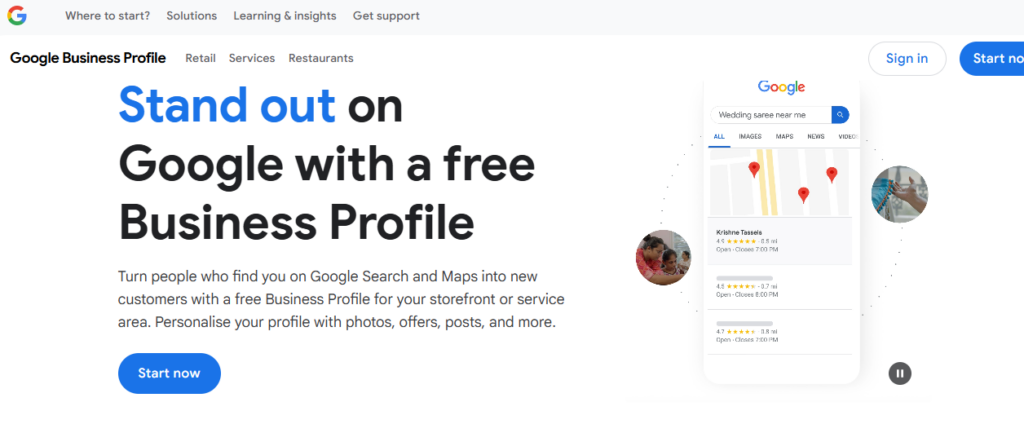
But don’t stop there; optimize for maximum visibility.
Core Details: Add accurate NAP, business hours (include holidays like Diwali), services, and attributes (e.g., “wheelchair accessible”).
Visuals and Posts: Upload high-quality photos of your interior, products, and team—profiles with photos get 42% more directions requests.
Use GBP posts for updates, offers, or events (e.g., “Monsoon Sale in Mumbai!”).
Post weekly to stay fresh.
Q&A and Insights: Answer common questions proactively. Use GBP Insights to track views and actions, adjusting based on data.
Multi-Location Optimization: If you have branches (like Haldiram’s across Delhi), create separate profiles but link them.
Step 2: Conduct Local Keyword Research
Keywords are such a huge deal for local SEO in India.
How do you pick a keyword?
What are local keywords for SEO?
To answer these, focus on location-specific terms like “best gym in Mumbai” or “florist in Bangalore.” But go deeper for 2025 success.
- Tools and Methods: Start with Google Keyword Planner for free volume data. Add Ubersuggest or AnswerThePublic for question-based keywords (e.g., “where to buy flowers in Bangalore”). Analyze competitors with SEMrush’s Keyword Gap tool.
- “Near Me” and Voice Optimization: Optimize for “near me” searches (e.g., “cafes near me in Delhi”) by creating dedicated location pages. For voice, use natural phrases like “what’s the best salon near me in Kolkata?”—voice searches are up 150% in India.
- Long-Tail Keywords: Target specifics like “affordable yoga classes in Pune for beginners” for lower competition and higher conversion.
- Seasonal Keywords: In India, incorporate festivals (e.g., “Diwali sweets in Chennai”) for timely boosts.
Step 3: On-Page Optimization
On-page SEO makes your site speak Google’s language. Use your researched keywords naturally throughout.
- Titles and Metas: Craft compelling title tags (under 60 characters) like “Best Café in Delhi | Fresh Brews & Snacks.” Meta descriptions should entice clicks: “Discover yummy cuisines at Delhi café—visit us today!”
- Headers and Content: Structure with H1 (main keyword), H2s (variations). Add local schema markup (JSON-LD) for rich snippets.
- Images and Alt Text: Optimize images with alt text like “cozy café interior in Mumbai.” Compress for speed.
- User Experience (UX): Ensure easy navigation with local CTAs (e.g., “Book Now in Bangalore”).
Step 4: Build Local Citations and Listings
Citations are mentions of your NAP online—build them for credibility.
- Key Directories: List on Justdial, Sulekha, IndiaMART, and global ones like Yelp. Submit manually for accuracy.
- Consistency Check: Use Yext or Moz to sync NAP across 50+ sites.
- Niche Directories: For food businesses, add Zomato; for services, UrbanClap.
Step 5: Utilize Online Reviews and Reputation Management
Reviews are social proof and a ranking factor—Google loves businesses with 4+ stars.

- Encouragement Tactics: Send post-purchase emails or use QR codes for easy reviews. Offer incentives like discounts (ethically).
- Response Strategy: Reply to all reviews within 24 hours—thank positives, address negatives empathetically.
- Review Monitoring: Set up Google Alerts for your business name. Use tools like ReviewTrackers for multi-platform tracking.
- Handling Negatives: Turn them around; a resolved complaint can win loyalty.
Step 6: Create Localized Content
Content builds relevance—make it hyper-local to engage.
- Blog and Social Ideas: Write blogs about your brand and products. Share on social with geo-tags.
- User-Generated Content: Encourage customer stories or photos.
- Sub-Strategy: Video Content: Create short reels on YouTube or Instagram about local tips—video searches are rising 100% yearly in India.
- Content Calendar: Plan around events like Holi or cricket seasons.
Step 7: Earn Local Backlinks
Backlinks signal authority—focus on quality local ones.
- Tactics: Guest post on regional blogs, sponsor events, or partner with influencers.
- Sub-Strategy: Community Involvement: Join local chambers or donate to causes for mentions. Use HARO for India-specific queries.
- Tools: Ahrefs to find link opportunities from competitors.
Step 8: Technical SEO and Mobile Optimization
Technical tweaks ensure Google can crawl and index your site.
- Speed and Security: Use Truehost’s hosting for fast, HTTPS-secured sites.
- Schema and Sitemaps: Add local business schema; submit XML sitemaps via Search Console.
- Sub-Strategy: Core Web Vitals: Optimize for Google’s metrics like LCP (under 2.5s).
- Mobile-First Indexing: Design for mobile from the start.
Additional Local SEO Strategies for 2025
In 2025, local seo in India evolves with AI, voice, and hyperlocal trends.
Let’s see how we can use some of those trends.
Strategy 1: Voice Search Optimization
With Siri and Google Assistant in multiple Indian languages, voice searches are booming—expected to account for 50% of searches by end of 2025.
Optimize by using conversational keywords (e.g., “What’s the nearest coffee shop open now in Delhi?”).
- Implementation: Create FAQ pages answering voice queries. Use structured data for featured snippets. For regional languages, add Hindi or Tamil content.
- Tools: Google’s Speakable schema; test with voice devices.
- Benefits: Higher visibility in zero-click searches.
- Pitfall to Avoid: Ignoring accents—test with real users.
This strategy can increase local impressions by 25%, especially in Tier 2 cities like Lucknow.
Strategy 2: Hyperlocal Targeting
Go beyond cities—target neighborhoods or landmarks (e.g., “cafes near Marine Drive Mumbai”).
- Implementation: Create micro-location pages (e.g., /mumbai-marine-drive). Use Google Ads geo-fencing for ads within 1 km.
- Tools: Google My Business for precise locations; Heatmap tools like Hotjar for user behavior.
- Benefits: 45% of local searches are hyperlocal, leading to higher conversions.
- Example: Domino’s Pizza uses hyperlocal for “pizza near [landmark],” driving app downloads in specific areas.
- Sub-Tip: Integrate with WhatsApp Business for local chats.
Ideal for dense metros like Mumbai, where competition is fierce.
Strategy 3: AI-Driven Personalization
AI tools analyze data for tailored local SEO in India strategies.
- Implementation: Use ChatGPT for keyword ideas or SEMrush’s AI for content optimization. Predict trends with Google Trends.
- Tools: PageTraffic’s AI for local insights.
- Benefits: Spot emerging queries like “eco-friendly stores in Bangalore.”
- Ethical Note: Avoid over-automation; human touch matters.
This keeps you ahead in a dynamic market.
Strategy 4: Video and Visual SEO
Videos rank in local searches—optimize for YouTube and Google.

- Implementation: Create local tours or tutorials (e.g., “How to Choose Sarees in Kolkata”). Add transcripts with keywords, geo-tags.
- Tools: YouTube Analytics; embed videos on site.
- Benefits: Video clicks are 41% higher than text.
- Sub-Tip: Use shorts for quick local tips.
Great for visual businesses like salons or restaurants.
Strategy 5: Social Proof and Influencer Collaborations
Utilize local influencers for backlinks and mentions.
- Implementation: Partner with micro-influencers (10k-50k followers) in your city for reviews or shoutouts.
- Tools: BuzzSumo to find influencers.
- Benefits: Boosts prominence; 88% trust reviews as much as recommendations..
- Tip: Track ROI with UTM links.
Strategy 6: Embed Google Maps and Location-Based CTAs
Make it easy for users to find you.
- Implementation: Embed maps on contact pages; add CTAs like “Get Directions to Our Mumbai Store.”
- Tools: Google Maps API (free).
- Benefits: Improves UX, signaling local relevance.
Strategy 7: Sustainable and Community-Focused SEO
Align with India’s growing eco-consciousness.
- Implementation: Create content on “sustainable shopping in Delhi”; partner with local NGOs for events.
- Benefits: Attracts niche audiences; builds long-term links.
Advanced Strategies and Tools for Local SEO in India
Building on the steps, here are refined tactics for 2025.
- Social Media Integration: Use Instagram’s geo-tags and stories for local targeting (e.g., #MumbaiEats). Run polls or live sessions.
- Paid Local Ads: Complement organic with Google Ads geo-targeting—set budgets for high-intent keywords.
- AI and Analytics: Use Google Analytics 4 for local traffic insights; AI tools predict shifts.
Tools Comparison:
| Tool | Use | Free/ Paid | India-Specific Tip |
| Google Search Console | Monitor rankings | Free | Track “near me” impressions |
| Ahrefs | Backlink analysis | Paid | Competitor local keyword spying |
| Yoast SEO | On-page optimization | Free/ Paid | Multilingual plugins for India |
| BrightLocal | Citation building | Paid | Indian directory focus |
Real-World Examples
Let’s see local SEO in India in action with expanded stories.
- Bikanervala (Delhi Sweets Chain): Facing competition, they optimized GBP with festive posts, added a .in domain via Truehost, and focused on reviews. Result: 20% foot traffic increase during Diwali 2024; rankings jumped for “sweets near me Delhi.”
- Bangalore Bakery Success: A small bakery used local keywords (“cakes near me Bangalore”), created seasonal content, and built citations on Zomato. With Truehost’s .in domain, they doubled online orders in six months.
- Delhi Bakery Case: A boutique bakery implemented GBP, local links, and hyperlocal targeting, seeing 150% sales growth. They avoided common mistakes like inconsistent NAP.
- Mumbai Boutique: Optimized for mobile and voice, partnered with influencers—200% foot traffic rise.
- Infidigit Client (E-commerce): An online retailer boosted organic traffic 300% with multilingual keywords and backlinks.
Replicate these with a .in domain from truehost. Track your progress like they did.
Common Challenges and How to Overcome Them
Local seo in India comes with its share of hurdles—here’s how to tackle them, including nasty mistakes you want to avoid.
- Challenge: “Near Me” Competition in Metros
Solution: Niche down (e.g., “vegan café in Mumbai”). Use long-tail keywords. - Challenge: Algorithm Changes
Solution: Stay updated via Google’s blog; diversify with social and email. - Challenge: Managing Reviews
Solution: Automate alerts; train staff on responses. Avoid fake reviews—Google penalizes. - Mistake 1: Inconsistent NAP – Fix with audits.
- Mistake 2: No Location-Specific Content – Create city pages.
- Mistake 3: Ignoring Mobile – Prioritize responsive design.
- Mistake 4: Neglecting GMB – Update regularly.
- Mistake 5: Overlooking Voice Search – Add conversational content.
Tip: Truehost’s support can help with domain-related issues, so reach out in case something is too complicated for you to solve on your own.
From X discussions, many stress intent over stuffing.
Conclusion and Next Steps
Mastering local SEO in India doesn’t require a big budget or tech wizardry—you can do it yourself with the right steps and strategies.
From optimizing your Google Business Profile to advanced tactics like AI personalization and hyperlocal targeting, this guide has equipped you to rank higher and attract nearby customers.
It doesn’t matter if you’re a startup like Boat or a local shop, local seo in India can transform your business, driving up to 76% more visits and sales.
Remember, consistency is key—implement these today and monitor results.
Ready to start?
Get a .in domain from Truehost to boost your credibility and rankings.
Launch your local SEO in India journey now and watch your business thrive!
 Web HostingBudget-friendly shared hosting plans
Web HostingBudget-friendly shared hosting plans Domains SearchFrom .com to unique country domains, explore and register extensions worldwide.
Domains SearchFrom .com to unique country domains, explore and register extensions worldwide. WordPress HostingPower your blog or business with WordPress hosting.
WordPress HostingPower your blog or business with WordPress hosting. Email HostingSimple, secure email hosting that helps you stay connected and professional.
Email HostingSimple, secure email hosting that helps you stay connected and professional. Reseller HostingStart your own hosting business with easy and reliable reseller hosting plans.
Reseller HostingStart your own hosting business with easy and reliable reseller hosting plans. AffiliateJoin our affiliate program and earn commissions every time you bring in new customers.
AffiliateJoin our affiliate program and earn commissions every time you bring in new customers. IN Domain PricesDon’t miss out on the best domain deals in India!
IN Domain PricesDon’t miss out on the best domain deals in India! WHOIS LookupFind out who owns a domain name with a quick and easy WHOIS search.
WHOIS LookupFind out who owns a domain name with a quick and easy WHOIS search. Domain TransferTransfer your domain to us and enjoy reliable support every step of the way.
Domain TransferTransfer your domain to us and enjoy reliable support every step of the way. .Com DomainGet the most trusted domain for worldwide credibility
.Com DomainGet the most trusted domain for worldwide credibility All TldsSearch and register domain extensions worldwide.
All TldsSearch and register domain extensions worldwide.
